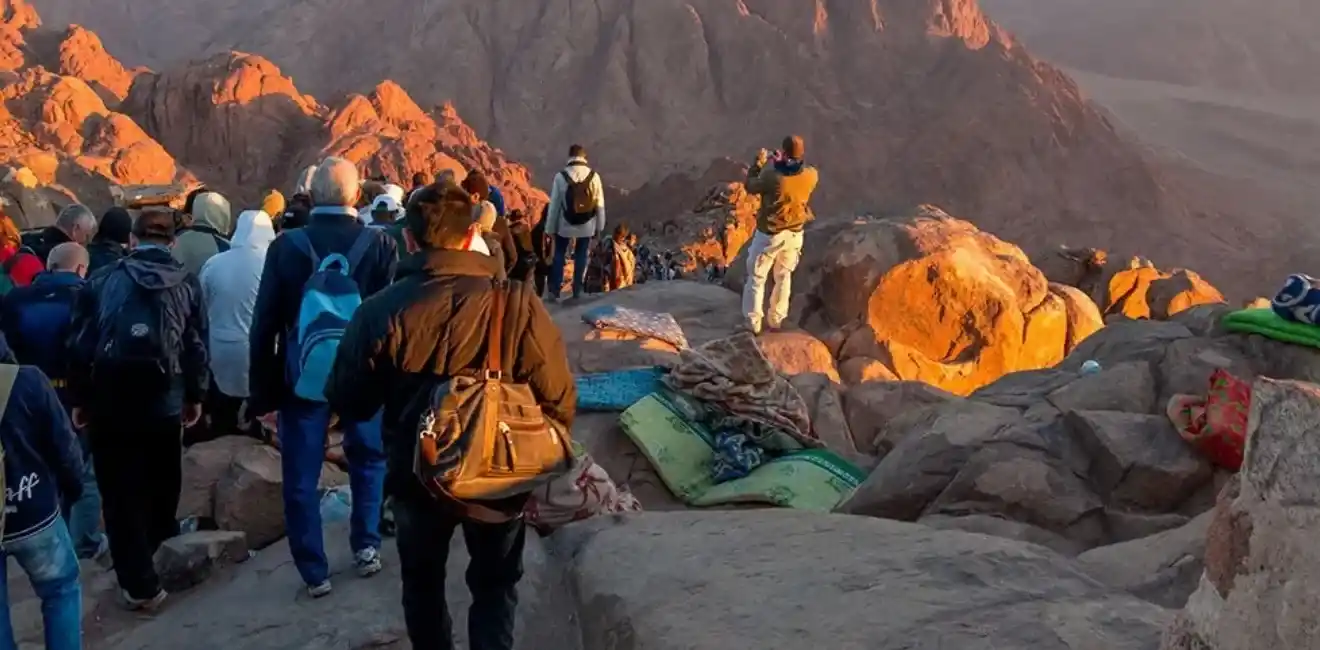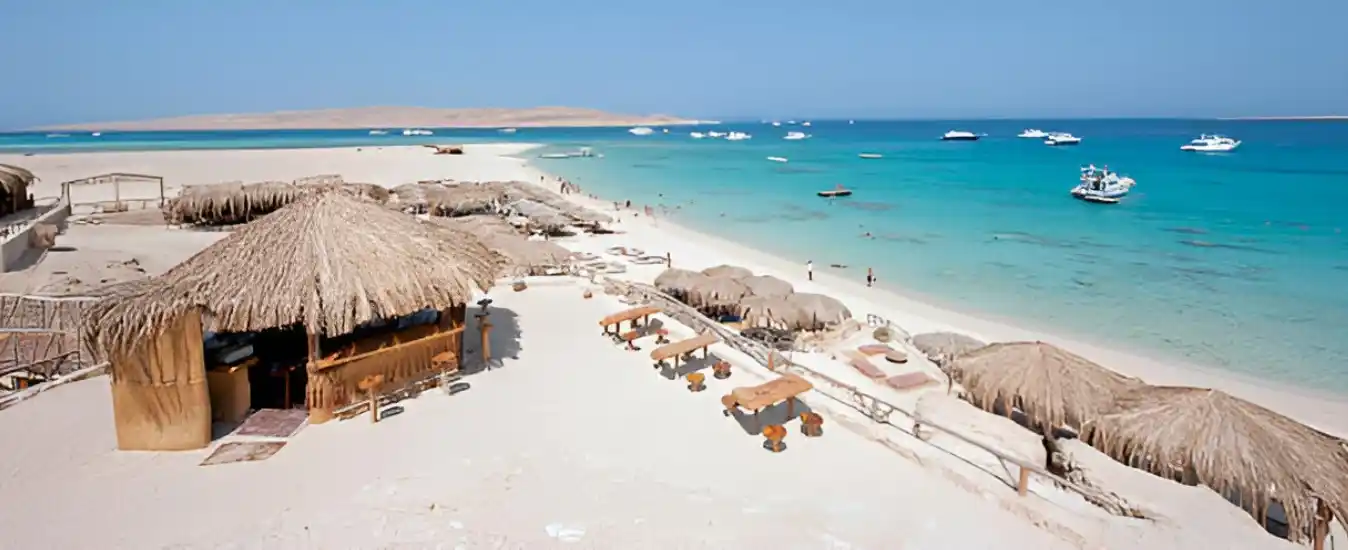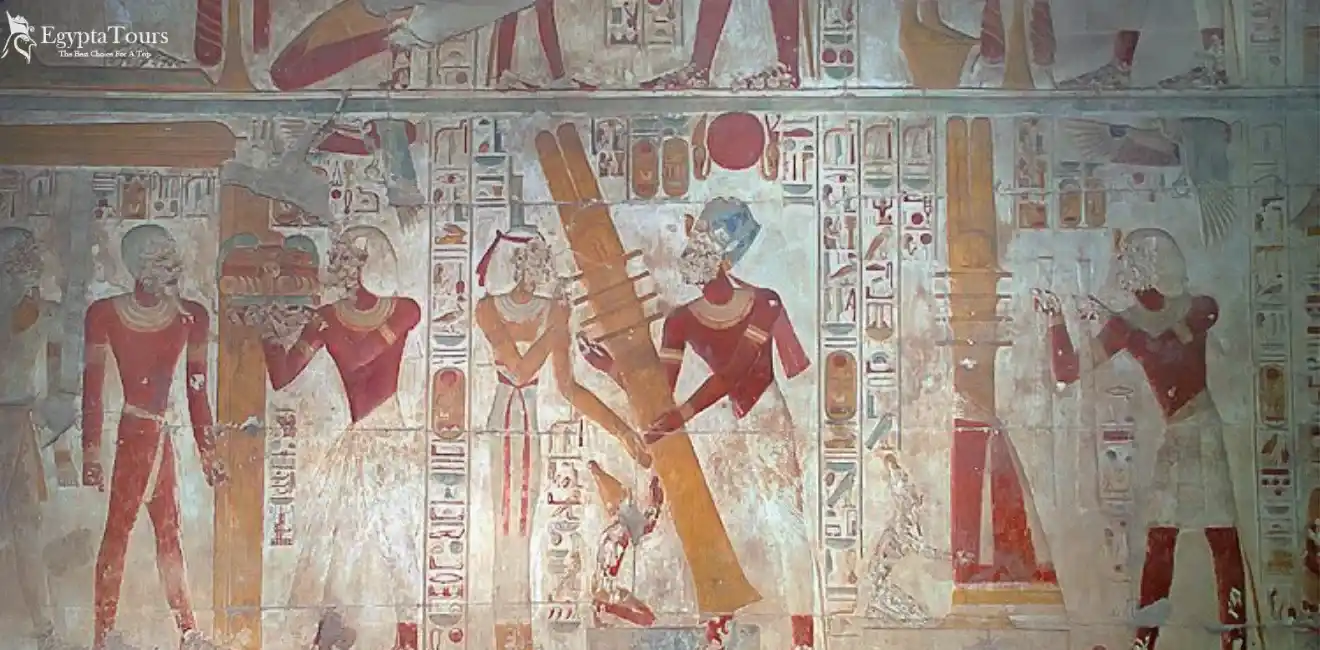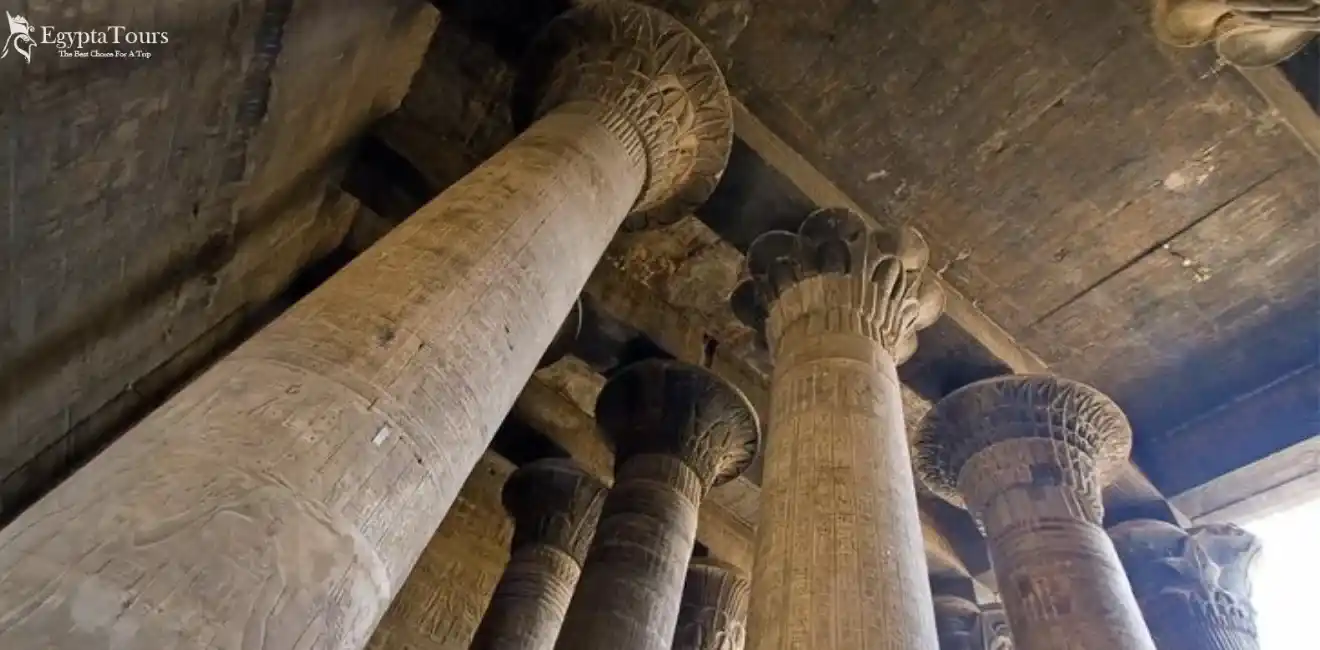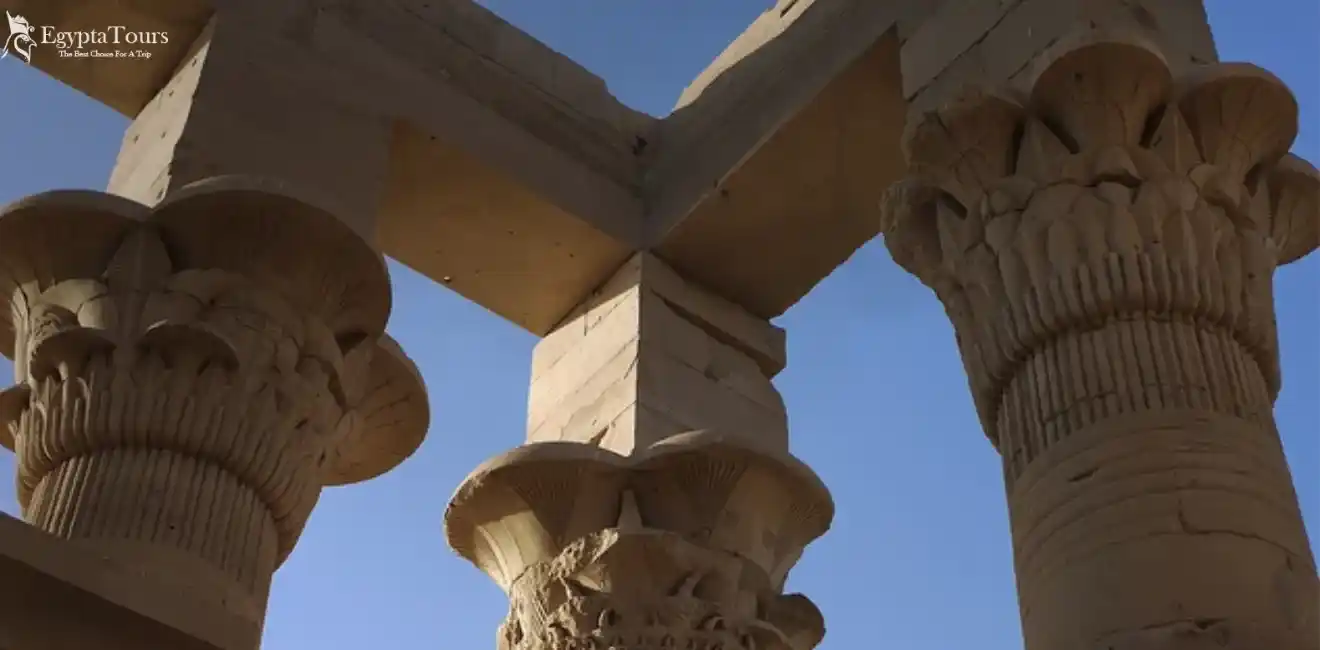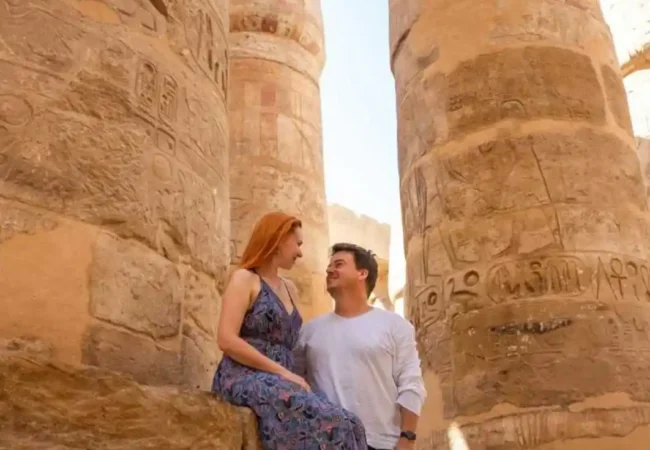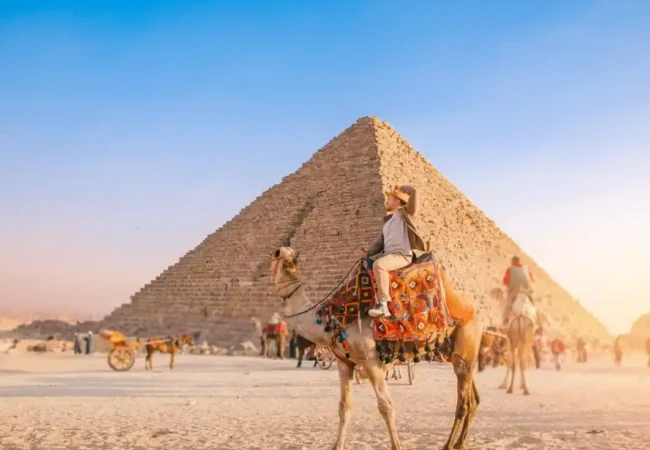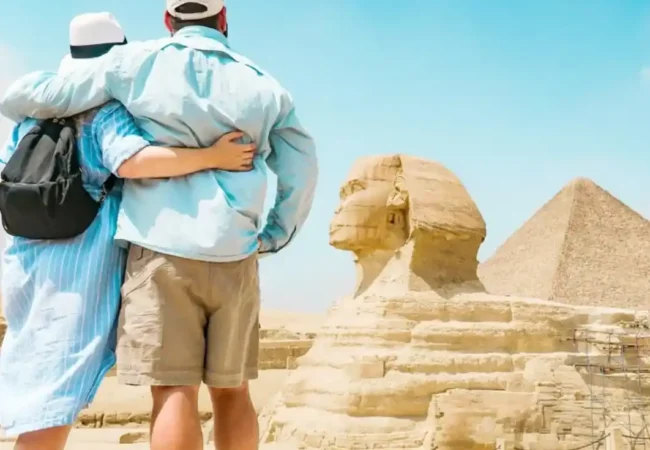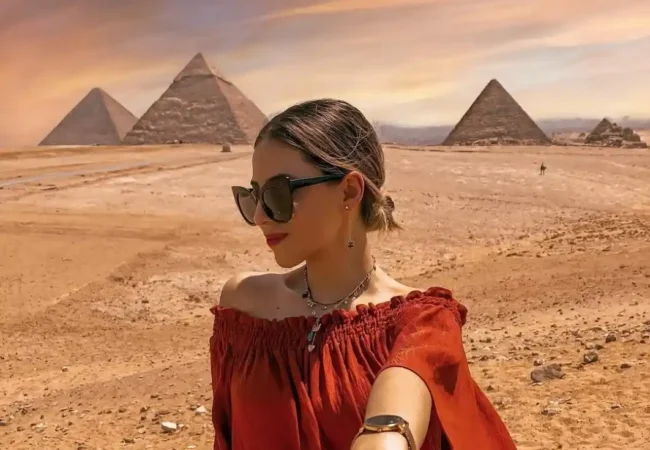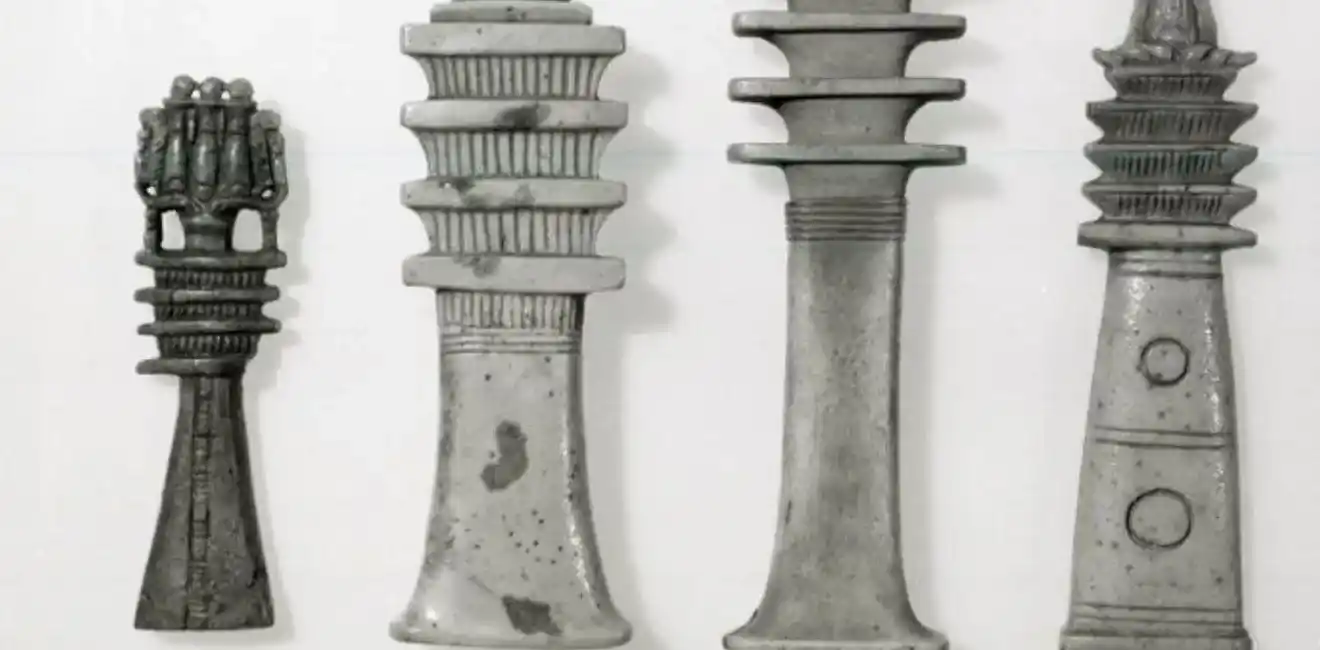
The Djed Pillar Symbol
The Djed pillar is one of the ancient Egyptian symbols as it is a column with four stacked layers at the top, composed of lotus flowers. According to ancient Egyptian beliefs, it symbolizes permanence, duration, stability, and resurrection.
It is closely associated with the god Osiris, as it is said to represent his spine becoming complete after his brother Set completely dismembered his body. Credit for this completion is given to his wife, Isis. For more details, follow our article.
The Djed pillar encompasses many meanings. The most prominent is the spine of Osiris, which is the most common meaning, as it represents the reassembly of Osiris’s body and his resurrection after being dismembered. Another prominent meaning is its representation of stability, which is why it was inscribed next to the pharaoh’s name and authority as a sign of the kings’ desire for the continuity of their rule.
It was mentioned in myths that ancient times witnessed a ritual called the “Raising the Djed” festival, a celebration believed to prolong the pharaoh’s reign and symbolize the victory he achieves over his enemies.
Purpose of the Djed Pillar
The pillar was famous for several purposes, including its use as one of the most important magical amulets for protection, as it was placed around the necks of the deceased. Therefore, it was sometimes painted on coffins. It was also taken as a symbol of resurrection and eternal life. Myths also show that they took the pillar as a symbol of renewal and the victory of the god Osiris over death and his return to life.
History of the Djed Pillar
The history of the pillar dates back to the pre-dynastic period, where it was associated with fertility and stability in that era. It represented high crop yields and the victory of a god over death. It witnessed a remarkable development, appearing in the temples of the Djoser pyramid complex in Saqqara, according to ancient Egyptian thought.
The Relationship Between the Djed Pillar and the God Osiris
The relationship between the pillar and the god Osiris, according to ancient Egyptian beliefs, is that it is the spine of Osiris, the god of the underworld. It symbolizes the stability, steadfastness, and enduring strength he possesses, in addition to resurrection and rebirth. The pillar represents the help of the goddess Isis to her husband, the god Osiris, to rise from death to a new life.
The pillar is related to the god as a tool for protection in daily life as well as after death, to support the liberation of the soul from the body and provide necessary protection. In addition to permanence and stability, the pillar was associated with the duration and stability of the god Osiris and the beginning of a new life cycle.
Uses of the Djed Pillar in Religious Rituals
According to ancient Egyptian rituals, the pillar was used in religious ceremonies.
Among the uses are the following:
- The king himself would raise the pillar during festivals and official occasions, symbolizing the continuity of rule and the renewal of life.
- It was one of the symbols believed to be necessary to be painted on the walls of the deceased’s coffin, at the level of his spine, to ensure the continuity of his life in the other world.
- The ancient Egyptian believed that the pillar protects from evil during daily life and after death. It was placed next to mummies to restore vital functions after resurrection.
- In Heb-Sed festival, the pillar was placed as a symbol of harvest, abundance of grain, and land stability.
The Raising the Djed Pillar Ritual and its Importance
It is one of the ancient Egyptian religious rituals, a symbol of permanence and renewal, and is associated with the god Osiris. The importance of raising the pillar lies in several points, including affirming the stability of the pharaoh’s rule and the return of agricultural life and the harvest season, which was akin to the return of life to the god Osiris.
Therefore, the symbol of life and authority was placed next to the pharaoh’s name as a symbol of the desire for the permanence of the pharaoh’s rule.
This religious ritual was performed at the “Raising the Djed” festival and involved the pharaoh using ropes to raise the pillar as one of the celebration’s manifestations. The ceremonies blended a group of rituals related to the god of life, Osiris, and the god of the dead, Ptah, in ancient Egyptian thought.
Examples of the Djed Pillar in Egyptian Temples
There are many examples of the pillar that appeared clearly in Egyptian temples.
Among the most important are:
- Tomb of Osiris: The close association of this pillar with the god Osiris is what led to its appearance in tombs, aligned with the spine of the deceased’s body. It was found on the bottom of coffins from the beginning of the New Kingdom.
- The Gate of the Gods: The pillar is found in the Djoser pyramid complex as one of the symbols that express permanence and endurance, which is closely related to the belief that death is a launch towards a new beginning, according to ancient Egyptian beliefs.
- Temple of Seti I: The pillar appears in many Egyptian inscriptions, and it was mostly drawn next to the ankh symbol, which is the symbol of life, as well as the was scepter, which is the symbol of authority, indicating authority, life, and also fertility.
Interpretation of the Archaeologists about the Meaning of the Djed Pillar
Archaeologists’ interpretations of the meaning of the pillar have varied as follows:
- Researcher R. T. Rundle Clark stated that the ritual of raising the Djed pillar represents the liberation of Osiris’s soul to the sky in the form of a star from which the forces of life emanate, bringing prosperity and stability to the coming year, not, as believed, that he rose from his tomb and left the underworld.
- Another group of researchers believes that it symbolizes a wooden pole or a wrapped bundle of papyrus plants to form a column, referring to a group of rituals related to agriculture and harvest in ancient Egypt.
- Some believe that the pillar was originally a local symbol of the god Andjety and then evolved to become a symbol of the god Osiris, representing a bundle of stalks tied together to express permanence and stability.
- Researcher Gaston Maspero indicated that the pillar symbolizes the four cardinal directions, not as is commonly believed. Amidst the many interpretations, the symbol is one of the ancient Egyptian symbols that feature prominently in Egyptian temples.
Conclusion
The Djed pillar is one of the symbols of ancient Egypt, as it represents permanence and stability in their beliefs. It represents the spine of the god Osiris and appears in many inscriptions and carvings, and is associated with the god Ptah and the god Osiris.
FAQs
What is the djed pillar theory?
The theory refers to the concept associated with ancient Egyptian symbols that express life, stability, and permanence, in close connection with the god Osiris, who is believed to have the Djed pillar as his resurrected spine.
Has a DJed pillar ever been found?
Yes, of course, it has been found at various archaeological sites. It appeared as a symbol in carvings and inscriptions during the pre-dynastic period and was also found in many Egyptian tombs and temples.
What does the djed mean spiritually?
The Djed pillar spiritually represents in ancient Egypt a symbol of stability and eternal life, which embodies the stability that fills the universe and reflects the power of the human soul, which is the soul of the god Osiris, for resurrection and survival, which lies in inner strength.
Is the Djed pillar still relevant today?
It is still closely relevant to Egyptian cultural heritage. It is also a symbol of ancient Egyptian civilization and is widely used in contemporary artistic designs inspired by ancient Egyptian civilization.
What is the djed symbol in Egypt?
The Djed pillar takes the form of an upright column topped with layers of lotus flowers, which symbolizes the spine of the god Osiris. It was drawn next to the pharaoh’s name to express the desire for the continuity of rule.
What are the 4 ancient pillars?
The columns in ancient Egypt were diverse and included papyriform columns, which are shaped like bundles of papyrus plant stems, as well as lotus columns inspired by the lotus flower, Hathoric columns, and columns of geometric style.


